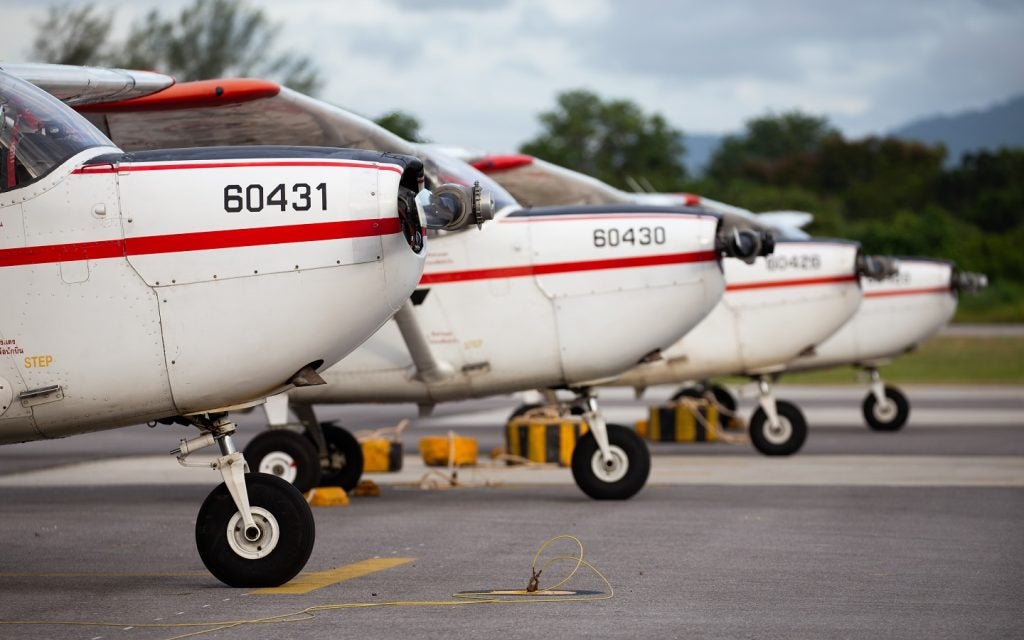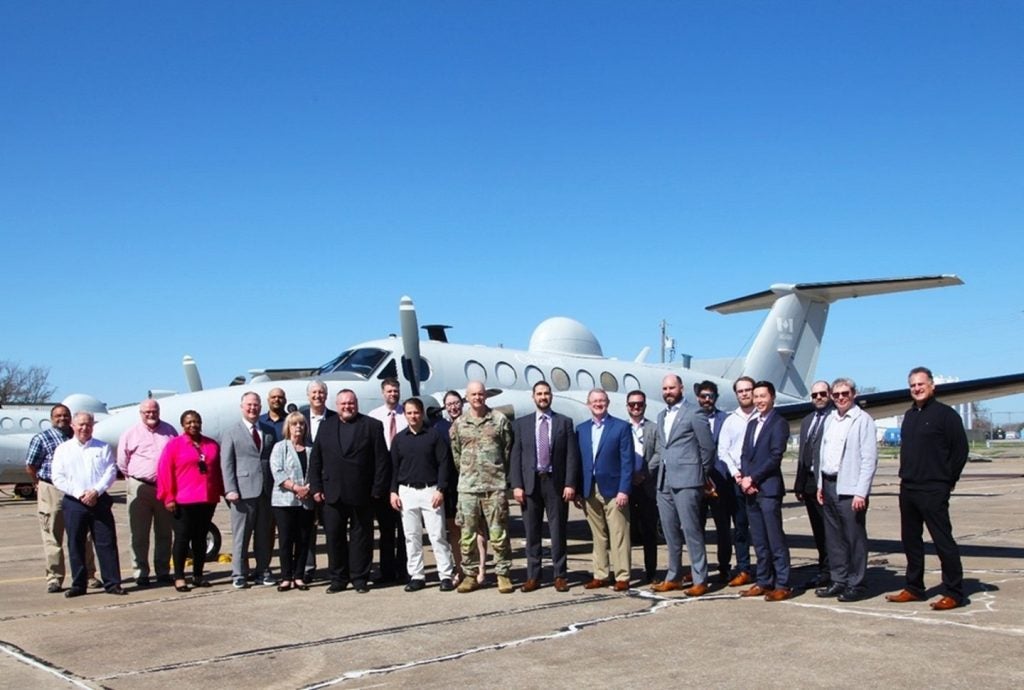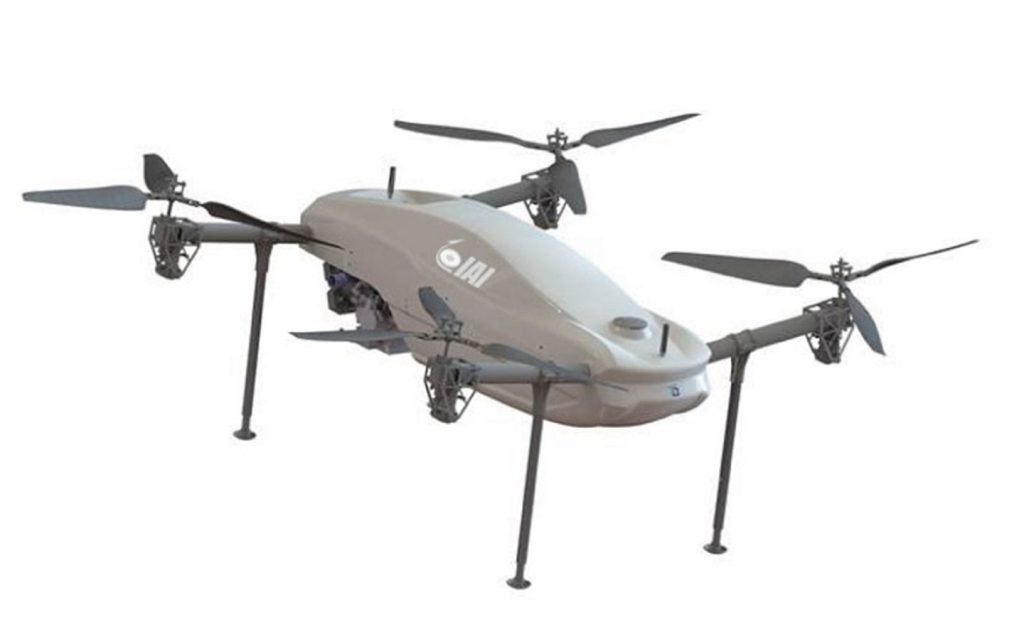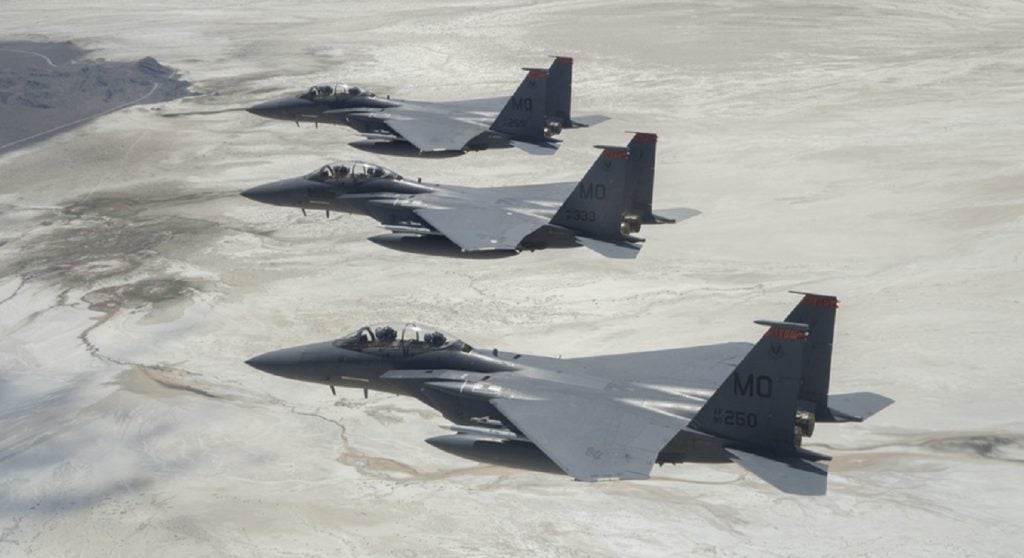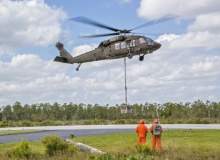

A medevac helicopter lands near the site of an attack of an armoured patrol and its crew members carry injured personnel on board before taking off for the nearest trauma centre. In flight, the condition of an injured combatant deteriorates and all hands are needed – including the medically-trained pilot. The pilot flicks a switch and the helicopter automatically takes over navigation to its designation and lands safely on arrival, avoiding hazards en route.
This is the vision for a new generation of unmanned and optionally manned aircraft evolved from current and legacy manned systems that could not only save cash-strapped militaries money and time but also offer new mission capabilities. Three new programmes are demonstrating just how far this exciting new technological development could take military aircraft.
Sikorsky Manned/Unmanned Resupply Aerial Lifter (MURAL) programme
In March, Sikorsky carried out the first demonstration of optionally piloted flight using a Black Hawk helicopter. Then, in May, the company announced it had developed the first product to feature Matrix Technology — hardware and software that replace traditional mechanical control systems — by converting a retired UH-60A Black Hawk helicopter into an optionally piloted variant capable of a wide spectrum of missions.
"The aim of the programme is to show we can insert autonomous technology into the Black Hawk platform to enhance its mission flexibility, improve its safety of operation and enable it to operate with greatly reduced pilot workload," says Chris van Buiten, vice president of Sikorsky Innovations.
See Also:
"It’s not just making an autonomous platform; it’s making it more capable and functional when it’s carrying people as people. That creates a whole new set of requirements and raises the bar in terms of the integrity of the autonomy system."
How well do you really know your competitors?
Access the most comprehensive Company Profiles on the market, powered by GlobalData. Save hours of research. Gain competitive edge.

Thank you!
Your download email will arrive shortly
Not ready to buy yet? Download a free sample
We are confident about the unique quality of our Company Profiles. However, we want you to make the most beneficial decision for your business, so we offer a free sample that you can download by submitting the below form
By GlobalDataSikorsky selected the optionally manned route rather than full autonomy to support its aims of improving safety across its entire military and civilian product range, incorporating technology from manned platforms, starting with fly-by-wire then adding high-level augmentation and pilot assistance.
A growing number of industry experts begin to question the F-35’s stealth performance.
"You can call it autonomy except that the operator is sitting inside the aircraft," explains Igor Cherepinsky, Sikorsky’s chief engineer for autonomy. "We will eventually see piloting this vehicle becoming very mission-oriented, where pilots become mission managers, and their actual location is mission-dependent. There are plenty of missions where you still want human eyes there at the event, but you don’t necessarily want the human being to be doing all the control of the aircraft. Our optionally piloted vehicle allows them to be there, in the cockpit of the aircraft, or in the back of the aircraft."
To achieve this, the converted UH-60A will first operate using a fly-by-wire kit before demonstrating full unmanned capabilities with perception-system-in-the-loop using a variety of sensors installed on board. These, integrated with normal airfield data, will enable the helicopter to perform a fully autonomous mission where it can take off, fly avoiding obstacles, find its own landing zone and land.
While Sikorsky is also developing a purely unmanned full-size platform through its X2 programme with Boeing, using existing platforms to develop an optionally manned system the size of a Black Hawk from scratch would be a billion-dollar plus.
"This isn’t a little quad-rotor that you make in your basement in a month; these are very large sophisticated systems," says van Buiten. "We’re leveraging the existing design, its global support network, and, in the case of both those aircraft, millions of hours of safety record and improvement really create a great foundation."
Crew safety is equally important, and Sikorsky wants its technology to reduce the incidence of ‘controlled flight into terrain’, the leading cause of fatalities in military and civilian rotorcraft.
"A good helicopter with a flight crew that is confused, disorientated, overloaded, experiencing very high workload can result in the loss of the aircraft," says van Buiten. "We see this technology that makes the aircraft safer and easier to fly as giving the aircraft ‘virtual bumpers’ to avoid controlled flight into terrain."
However, the new technology is likely to drip-feed into new models of aircraft rather than being delivered as a fully-fledged final product.
"It’s not just a big bang of all of a sudden you get the entire kit to convert the Black Hawk into a fully-autonomous platform," says van Buiten. "There’s functionality that can be added along the way to improve the existing platform and its handling qualities before inserting fly-by-wire technologies that will enable new levels of autonomy. We’ve seen an example of that in the commercial world; we offer automated offshore oil rig approach software that has been very popular with the commercial customer, which falls short of full autonomy, but takes one of the highest workload tasks and automating it."
Sikorsky is working with a number of specialist partners on the MURAL programme. Think-A-Move has contributed the speech recognition engine, Kutta Technologies supplies the portable back-pack ground station, and the company is in discussions with Advanced Optical Systems to use its sensors to identify loads on the ground.
The company sees the demonstration as a step towards a future where all Sikorsky military and civilian products will be offered as optionally piloted models where the operator skill set required fundamentally changes from a traditional pilot to a mission manager.
"In the MURAL demonstration, we saw the first glimpse of a minimally-trained operator," says van Buiten. "We took a young flight-test engineer who did not know how to fly a Black Hawk and gave him the Kutta ground control system and let him mission-manage a Black Hawk in flight. It was really the first glimpse of what this future is going to look like."
Boeing – QF-16 Full-Scale Aerial Target programme
The Lockheed Martin F-16 Flying Falcon has been in service since the 1970s, and now Boeing has a plan to bring retired aircraft out of the aviation boneyard and back in the sky as aerial targets through the Full-Scale Aerial Target (FSAT) programme. Known as QF-16s, they will replace the US Air Force’s QF-4 fleet as target aircraft with characteristics representative of current potential threats to train pilots.
"We are currently in flight test and demonstration, with low-rate initial production slated to begin this fall," says Paul Cejas, QF-16 chief engineer. "The advantage of using legacy aircraft is that there are a number of aircraft in storage that could be converted for use as an aerial target as opposed to an entirely new programme start."
Billions of dollars are being spent to upgrade and modernise the US Air Force’s ageing fleet of Cold War strategic bombers.
Recent industry speculation suggested that a more advanced version of the QF-16 could fulfil a US Defense Advanced Research Projects Agency (DARPA) requirement to provide close air support to troops in future combat. However, Boeing is currently only contracted for the FSAT programme, and is unwilling to speculate about missions beyond FSAT.
Saab – optionally manned Gripen
While helicopters offer great versatility, their range is limited compared with winged aircraft. Saab announced in June 2013 that it was looking to develop an optionally manned version of its JAS Gripen-E multirole fighter. The programme is currently at an early conceptual work and design studies stage, and Saab has also had discussions with potential customers.
Ulf Nilsson, Saab’s head of Gripen, says: "The optionally unmanned Gripen could be used for extremely dangerous missions far beyond reach of rescue helicopters, as well as very monotonous and long surveillance missions."
Nilsson explains that, in a similar approach to Sikorsky, rather than making a separate version of Gripen, Saab would add optionally unmanned as discretionary functionality for all current and future Gripen customers. This would not only dramatically reduce development and operation costs by using an existing platform, but it would also mean the aircraft would share a common logistics base with its manual predecessors.
"The technology would be based on conventional technology for unmanned aircraft, such as autonomy, auto-pilot modes, data-links," says Nilsson. "Saab has a long experience in developing unmanned vehicles, for example Neuron and Skeldar."
According to Saab, with reduced defence budgets in many countries it will be important to bring down costs for unmanned systems, both in acquisition and operations.
"If one platform could be used for multiple roles and missions the cost will be reduced. Since Gripen is a truly multirole aircraft, Saab sees this as the next step," says Nilsson.
Recycling in the air
All three programmes are currently at an early stage, but Sikorsky, Saab and Boeing demonstrate that there is a military will to re-use existing manned platforms as optionally manned and fully unmanned platforms. These winged and rotor aircraft will be able to perform dull or dangerous missions or switch to automatic flight mid-mission to enable personnel to engage in more urgent tasks. In some cases, their new life will be short-lived as they fly once more after retirement only to be shot from the skies.
But in all cases, significant savings can be made by developing full-scale unmanned systems from scratch while, vitally, introducing new levels of safety for the pilots and crew.
Follow Berenice Baker on Google+


.gif)

